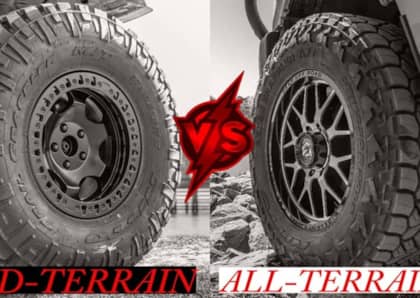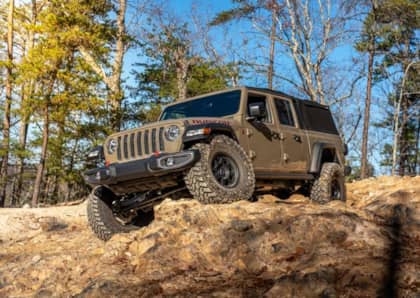Secrets of the 1997-2004 C5 Chevrolet Corvette Chassis Revealed: Why It Works So Well And What You Can Improve
When the Chevrolet Corvette evolved into the C5 generation at the end of the 1990s, it represented a shocking leap forward in terms of design. The previous Corvette—the C4—had also been ground-breaking when it first appeared nearly 15 years beforehand, but advances in materials, building techniques, and computer-assisted modeling virtually guaranteed that the C5's team had a huge advantage in terms of building a fully modern, high performance automobile.

Although much as been made of the C5 Corvette's introduction of the LS family of V8 engines, Chevrolet's work on the vehicle's chassis was just as crucial in transforming it into a legitimate, world-class sports car. Pushed by a mandate from GM execs that the C5 had to substantially out-perform the C4 in every conceivable measure (or it simply wouldn't be funded), the redesigned Corvette was a complete reinvention of Chevrolet's icon.

Taking a closer look at the details of its phenomenal frame and suspension reveals just how far the model's engineers were able to push the on-track envelope while still maintaining a resolutely streetable driving experience. From our perspective nearly 25 years later, it also shows just where the C5 can be improved, and how to squeeze even more speed and handling out of its exceptional platform.
Hydroformed Backbone
The single biggest advantage that the C5 Corvette has over its C4 predecessor is its hydroformed frame. Whereas the 1984-1996 Chevrolet Corvette featured a traditional boxed perimeter frame that was matched with a 'birdcage' to create the vehicle's underpinning structure, the C5 introduced the hydroforming process to shape each side rail into a single, 13-foot long piece, with a center 'backbone' providing additional strength down the middle of the car.

The front-mounted engine was then connected to the rear-mounted transmission by a torque tube that prevented either component from flexing individually, a marked difference from the traditional direct-mount transmission used by previous 'Vettes.

The end result? Four times the stiffness of the C4, and a convertible model that was just as twist-resistant as the coupe (in stark contrast to the much floppier open air versions of the older Corvette), without the need for high step-over rails blocking the passenger compartment from the street or any additional under-car bracing. This also made it possible for the Corvette to offer a targa roof without an appreciable impact on performance versus a fixed-roof coupe.

Hanging off this ultra-stiff setup were aluminum double A-arms at each corner (as with the C4), with four different levels of shock and spring tune available (FE1, Z51, F45, F55), with the latter two representing active damping. Also like the C4, the C5 Corvette maintained the use of lightweight composite leaf springs mounted at the front and the rear of the vehicle, making a break with the heavier steel coil designs found on most other sports cars of the era.

Track-oriented Z06 models added 10 percent stiffer springs on top of the Z51 package rating, along with FE4 shocks and a competitive driving mode for its electronic stability control system (called Active Handling 2 versus the standard Corvette's Active Handling)
Improving On A Legend
Advanced construction techniques leading to exceptional stiffness is the secret to the C5 Corvette continuing to be a high performance weapon of choice so many years after it debuted. With such a robust chassis to work with, Chevrolet engineers were able to develop a suspension setup for the car that didn't have to mask any of the platform's foibles, which meant a laser-sharp focus on performance rather than mitigating noise, vibration, and harshness.

How can it be improved? There are some easy upgrades to make for the sway bars: bolting in Z06 bars adds stiffness, and as installing the 2002+ model year aluminum end links in place of the older plastic design is also an improvement. It's also possible to retrofit MagneRide F55 damping shocks to C5 Corvettes that came with the less sophisticated F45 adaptive shock absorbers, requiring the addition of a specific upgrade kit from General Motors along with the MagneRide shocks themselves. For street use, this is an ideal setup, as it allows the driver to dial in specific suspension response depending on how aggressive of a drive is planned.
Track-Ready Updates
For extended track use, it's worth looking into aftermarket higher spring rate leaf units, which vary from 750 lbs to 1,300 lbs depending on whether the Corvette in question is going to occasionally be driven in a street setting or exclusively on a road course. It's also possible to completely replace the leaf setup with coilovers at all four corners, which is a more involved, and expensive, modification to make to the C5 platform. Keep in mind that with both coilovers or the leaf springs, it will be possible to adjust the Corvette's ride height to lower its center of gravity.

Sticking with the leaf springs and opting for the Z06's FE4 shocks is a winning combo, and of course there is no shortage of third-party shock options for the Corvette. At that point, it's also worth upgrading to a thicker aftermarket swaybar, especially if you've reached the limits of what the Z06 bar has to offer. Moving to urethane suspension bushings from rubber is also a stiffness-adding measure best suited to a track-focused car.

The C5 Corvette has a huge amount of support both from Chevrolet and the performance parts community. At this point in its history, there are virtually limitless options available to you when assembling the combination of handling and comfort that you desire from the platform. With a firm foundation to build on, the C5 is head and shoulders above most other late-90s/early-2000s sports cars when it comes to bang for the buck.











